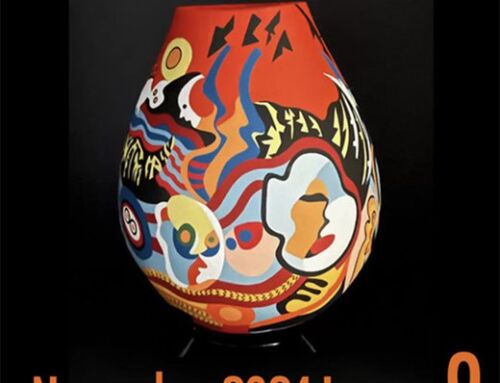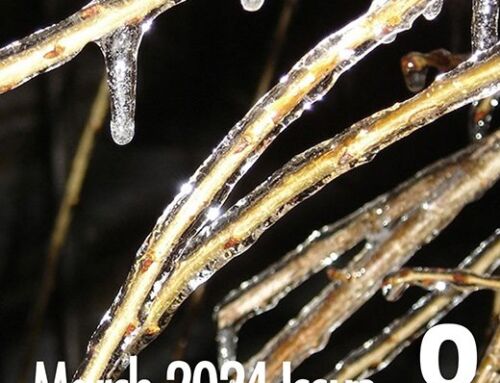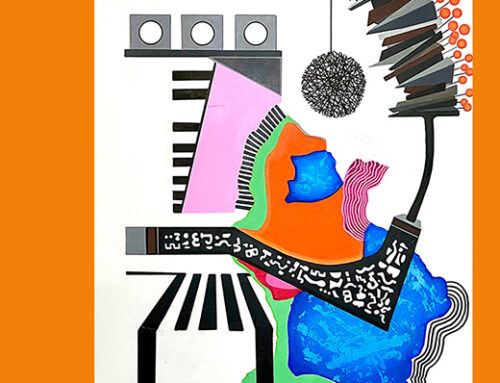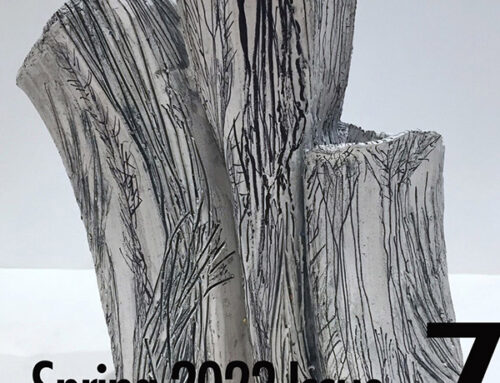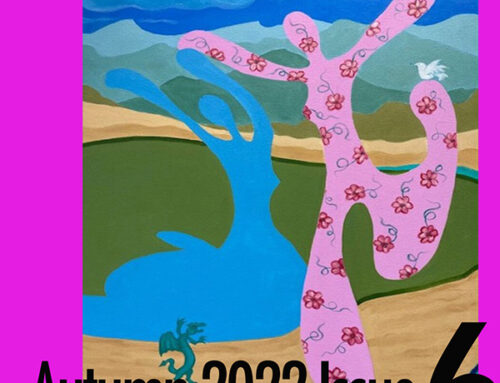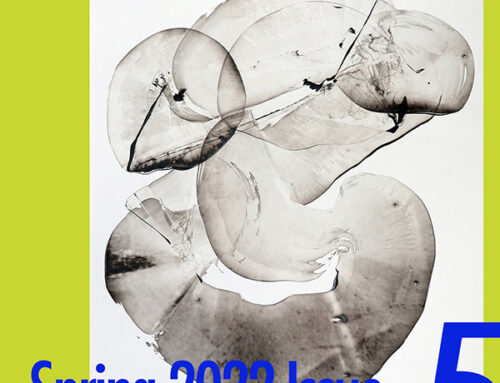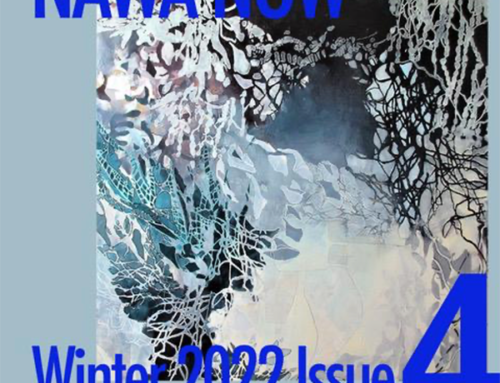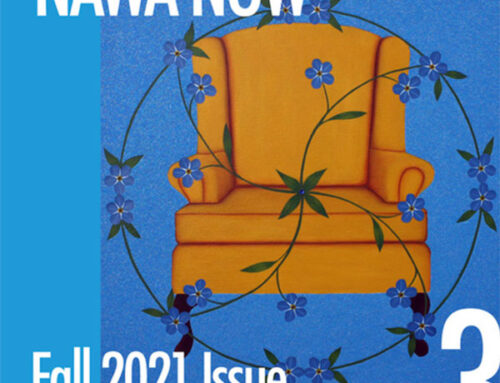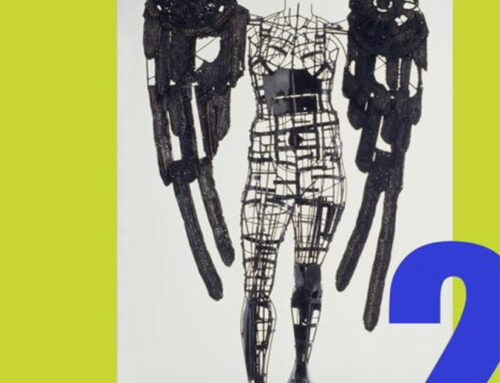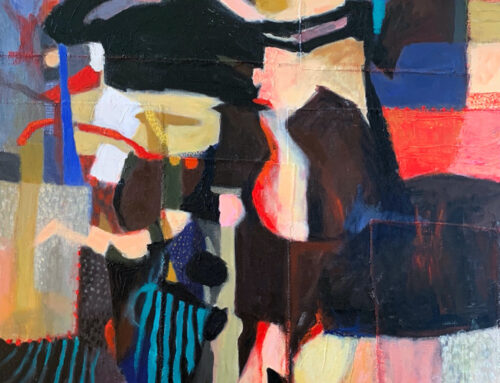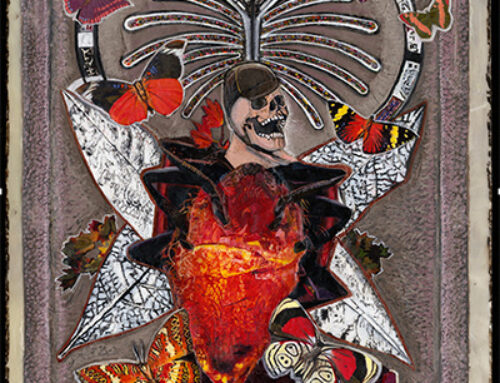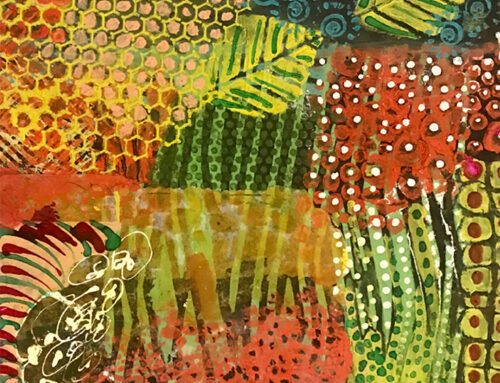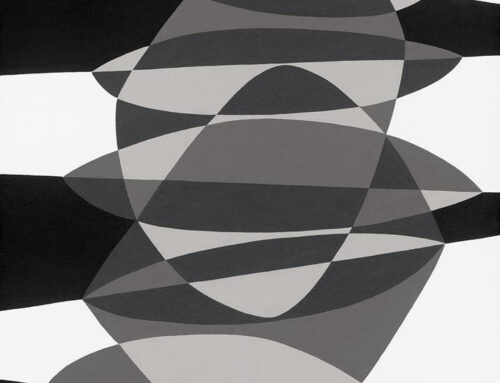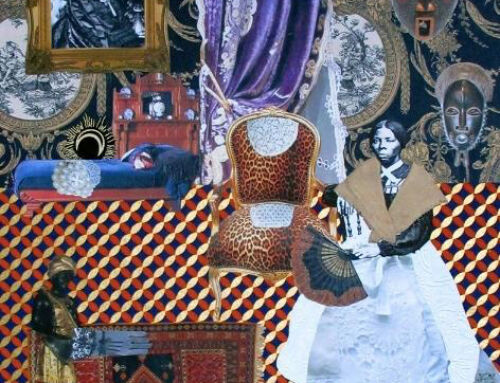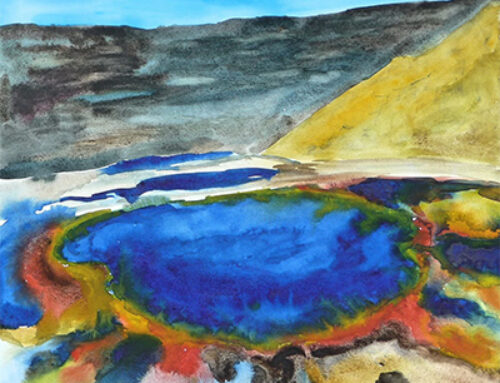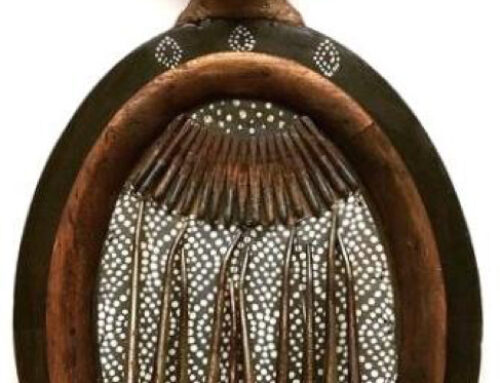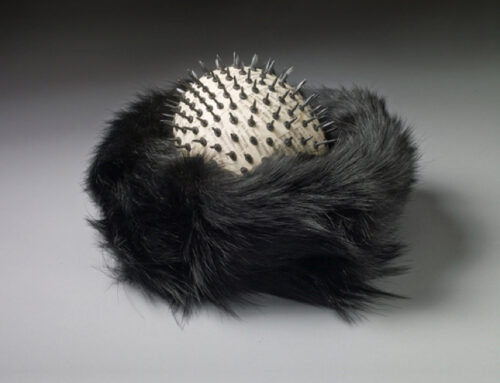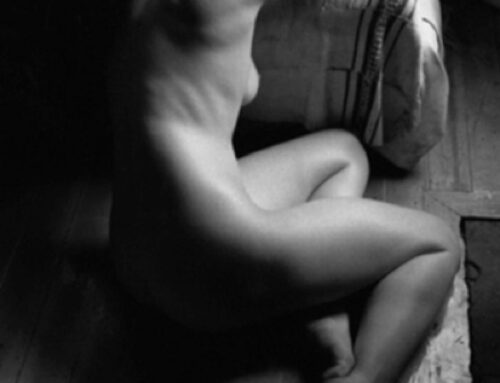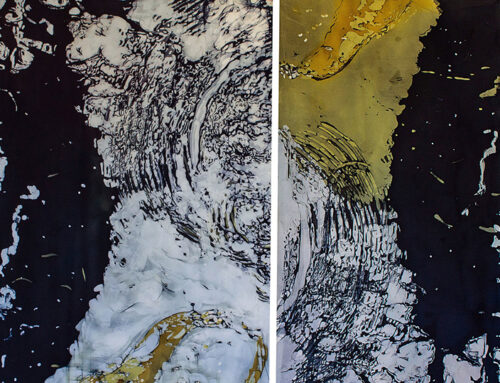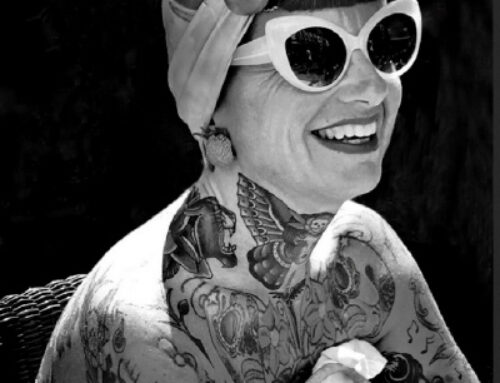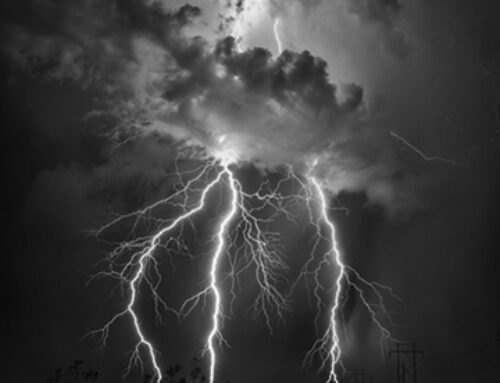
Fall 2020

Mary Ahern, Pay Attention Here – Orange Hibiscus, Oil on canvas, 36 x 36 in.
ABOUT Pay Attention Here – Orange Hibiscus
For years, I have created floral and garden paintings as the subject of my art. During the last number of years, I’ve focused ever more closely on the centers of flowers as they speak to me more deeply of the reason for their existence. And ours as well.
As a passionate gardener, I am inspired by the gardens I designed and tend surrounding my own studio in Northport. These flowers represent to me a microcosm of the universe. The outsize scale of these individual flower portraits demands attention. They ask questions beyond the canvas.
What is the purpose for such magnificence in nature? What is the reason for such color, such form, such diversity? What is their relationship to the communities in which they belong, their relationships with other plants and species that sustain them, invade them and nourish them? What of their lifecycle of birth, growth, senescence and rebirth? As humans, what can we learn from their seemingly simple existence?
Initially, we see with our eyes. We name the subject, identify it and classify it. But, we also have a duality of vision which allows us to contemplate with an inner vision. This art invites both the external and internal views.
The dual naming of each painting reflects the complex meaning of the work and is an enticement to think more deeply about the subject. This painting, Pay Attention Here – Orange Hibiscus, is at first a call for contemplation of purpose and secondarily, the common name of the flower which enables a more familiar entry into the conversation.
PRESIDENT’S CORNER
 This year is revealing a lot of unexpected and unusual experiences.
This year is revealing a lot of unexpected and unusual experiences.
We are making a lot of “firsts steps” into the new unexplored realm of reality. One of such “first steps” for NAWA was its 131st Annual online Members’ Exhibition.
Not only was it a leap of faith into the 21st century by itself, the fact that this was a necessary measure due to restricted social distancing made the Annual Exhibition a very personal experience.
We missed sharing our time together during the installation, being squeezed by the eager art visitors, friends and family at the reception, and commenting on each other’s shoes and dresses—although we could see scarves, hairdos, cool glasses and necklaces as we were watching the Zoom Reception and the Awards Ceremony on our home computer screens. BUT we are still together in numbers—a new record of 254 artists participated in the first NAWA online Annual. The Jurors remarked on an outstanding quality of work as well as the variety of genres and media. The online schedule allows us to host the Annual on the homepage at www.thenawa.org website for three months, until the New Year.
Congratulations, ladies, we did it. Again!
The Artists Panel series enables us to zoom into Award-winning artists to learn about their inspiration and their process. This series will be uploaded to NAWA YouTube channel in November for later playback.
Thank you so much for being a part of NAWA!
Natalia Koren Kropf
NAWA President
A WORD FROM BIANA
 Dear NAWA Community,
Dear NAWA Community,
I hope that you are staying healthy and keep creating during these unprecedented times.
The past three months at NAWA have been very productive.
I am very proud to say that the 131st Annual Exhibit was very successful. We have given 34 awards totaling 10,000 in prizes. If you have not had the time to see the virtual exhibit, please visit the NAWA website. All work is available for sale through our e-commerce site.
As most of you know, we are currently working on the 131st NAWA Catalog that is archived in many US museums and libraries. If you have additional questions about the catalog, please email office@thanawa.org.
We have recently updated our member database and added a feature to the NAWA website that allows current members to create a member account and take care of all their membership needs. We have sent the instructions regarding this new member’s feature and hope you will find it beneficial.
This year, NAWA has welcomed seventy new members into our community. The online New Member exhibit will open on November 1st. We invite you to visit the NAWA website and see your peers’ work.
As always, I wish you continued success and creative expression.
Warm Regards,
Biana
RED CARPET NAWA MEMBER

Georgette Veeder
(Becoming acquainted with Georgette’s artworks and process, albeit online, I am impressed by her considerable talent, but also her certainty, curiosity, and courage. She tackles her art and the world head-on. She is the perfect definition of a creator; a maker of worlds out of her own consciousness. We are proud to feature her in NAWA NOW. sb)
I have been daydreaming, drawing, and sculpting since an early age. I grew up in a bilingual environment. It was a turbulent and difficult setting. In my struggle to find identity, I made art. I found that I could express thoughts and feelings that I was unable to articulate in words. This was the common language that created a bridge of dialogue. It helped me survive. That survival became my passion.
My artwork represents a personal journey of years of research and development using fibers as a sculptural medium. Transcending descriptive words, I create staged landscapes defined by human presence. With textures, scale, space and forced perspective I challenge the viewer to enter my world of illusions. Fantasy and reality play the mind. How do we relate? How do we fit in? A call for a consciousness.

Arch, 10 ft x 6 ft x 6 in
I graduated with a degree in art education. After several years of teaching, I felt a need to move further ahead in my art. I applied and was accepted at the Pennsylvania Academy of the Fine Arts. At that time (in the dark ages!) the program was strictly academic. I could specialize in painting or sculpture or printmaking. When I asked if I could study both sculpture and printmaking, they were floored!! Finally, they agreed.
At Pennsylvania Academy of the Fine Arts I was fortunate to study under Martie Zelt who introduced me to papermaking and encouraged my visions. With papermaking the material is pure and simple. I cut cotton rags into small pieces and beat those pieces with water. The individual fibers separate and suspend. The cellulose in the cotton plant cell walls hydrates and binds chemically.
Once I got my hands in the wet pulp I was hooked. Not only could I print on the handmade paper, but I discovered that I could build, shape, sieve and cast the hydrated paper pulp. I could work large and yet somehow weightlessly. Paper power!

Migration, 29 x 28 x 3 in.
After living in center city Philadelphia for almost 20 years I made the difficult decision to move to a small farm in the country. Not knowing anything about farming I had to re-educate myself. In the process, I learned about new materials for sculpture. I took courses in felting and land management (art and agriculture). I felted the wool from my sheep and learned how I could incorporate plants in my sculptures.
Walking through pastures, woods and along streams, I am constantly inspired by undulating forces of nature: the formation of rocks eroded by wind and water. Organic forms stimulate my imagination. Relocation helped me discover a new world of forms, textures, and colors.

Voyagers, 15 x 9 x 10 ft.
In refuge from the city I compensated by staying heavily updated on all world affairs: climate change, politics, social injustices, and the pandemic. It is chaotic. Even though I am not in the middle of it, I feel the stress and anxiety. That is where my art comes into play. When I work, I get completely absorbed. I feel a Zen—a sort of escape. It is a way for me to relax and to get my head together for survival, just as I did as a child.
We live in a turbulent world. I hope, by sharing my visions and fantasies, I can help others find some respite, even if it is only temporary.
In March 2020 I had a solo exhibition at GoggleWorks. After I set up my work, the gallery went into lockdown due to the pandemic. Sadly, my show was a no-show show.
I would like to share my experience and passion for art with a video made by John Thornton on youtube. I hope to inspire others to follow their passion and survive this difficult time.
NAWA SHOUT OUTS
EDIE DILLON
Edie Dillon is the perfect example of an artist who has managed to marry her love of the natural world and the people that inhabit it with her art. In her words, “the enduring beauty of the natural world inspires and leads me. I am especially connected to and grateful for the glaciers and wild valleys of the North Cascade mountains in Washington State, the expansive skies and Ponderosa Pine forests of Arizona’s Mogollon Highlands, the lush and mysterious Lowcountry of South Carolina, and the sweet fields, forests, and shorelines of New England. I split my time between studios in Prescott, Arizona and Bellingham, Washington.”

My Favorite Dress (I Never Wore it Again), Formed and Welded Steel, Based on a 1971 Simplicity Pattern, 61 in. x 36 in. x 19 in.
The materials she uses are a direct reflection of her philosophy. “I love tactile interaction with materials; tying knots, the slick and stick of paint on canvas, the sheen of antique silk, the almost lacy edge of rusted metal, the stories in wood and stone. I particularly enjoy the patina of old things that possess a resonance of memory and time. I make sculpture from old, found things, transforming and combining them with objects from nature to create art that explores grace and beauty within the ordinary and responds to questions of what is valued in our time.”

Quagga, The Quagga (Equus Quagga Quagga) is an extinct subspecies of the Plains Zebra that lived in South Africa until the nineteenth Century. Mixed Media: Cigar Box, Vintage Tool, Other Found Metal and Rubber, 11 x 4 ½ x 9 in.
With a background in environmental science, education, and advocacy, her interest in how the human world interfaces with the landscape is integral to her creative projects. She has been a Gallery Manager at Yavapai College Art Gallery in Prescott, Arizona and is the Gallery Owner of the local Wellspring Studio and Gallery. Her five-month Artist in Residency at Prescott College involved designing and installing collaborative large-scale sculptures focusing on the effects of uranium mining and nuclear war. She taught classes on content and art making germane to the project.

Yellow Dirt testimony installed at Sam Hill Gallery at Prescott College
“Bringing together the history and ongoing impacts of uranium mining on Navajo lands and people and the widespread general effects of nuclear build-up, I invited artists and community members to render their responses onto dust masks and used these to build a large sculpture of the cold war’s most terrifying icon, the mushroom cloud.” Over 300 artists and citizens created masks for this effort, named the Yellow Dirt Testimony.

Mask by Dori Mion
To learn more about this humanitarian mission, we encourage you to read the article Edie wrote about that phase of the project.
You can read more about Edie and her art at www.ediedillonart.com

Masks by Helen Tainen

DEBRA KELLY
Debra’s roots run deep in South Carolina, where she grew up on a century-old family farm, which served as an inspiration for many of her early sketches and continues to influence her work today. Her subject matter often includes rural landscapes, animals (wild and domestic), classic cars and trucks, rusty equipment and old buildings.
She has been a working artist for more than ten years while working full-time in the financial services industry. In late 2019, she made the decision to pursue her art career full-time. In her artist statement she says: “I enjoy incorporating liberal touches of color and texture, unusual angles, and detailed drawing in order to capture movement and “life” in my subjects. While I work primarily in pastel, I also utilize acrylics and oils, as well as unusual surfaces such as wood or metal, to complement the subject. It is the unseen structure/bones, as well as the planes/angles, in a piece that build my canvas. The goal is to draw the audience into the piece from many angles.”

Facetime with Maxx (closeup), pastel, 9 in. x 12 in
She is currently a Member of Excellence of the Southeastern Pastel Society in Atlanta, an Associate Member of the Pastel Society of America in New York, and a member of the Pastel Society of South Carolina. She also is a member of the Crooked Creek Art League, a local organization. She has been accepted into and received awards in international, regional, and local juried shows. Juried shows include ArtFields, Southeastern Pastel Society International and Members Exhibitions, Pastel Society of NC, Union County Arts Council, and many others.

End of the Road, 24 in. x 18 in.

Blue Bird Eggs, 9 x 12 in
MANDI MOERLAND
Visual Artist
Inspired by years of professional dance, Moerland has made an artistic career of translating dance movement to the canvas. Her artworks are choreographed, rhythmic expressions of energizing brush strokes and vibrant paint. Considering and celebrating the body in the digital age returns the viewer to their most human form.

Moerland is working on her newest body of work, exploring how oils can be manipulated to behave like watercolors. This series will primarily focus on the energy of motion using figure, botanicals and landscapes, with an exhibition planned for 2021. “I enjoy the flow and spontaneity of watercolor. Watercolor echoes my experience as a dancer, the paint carries the spontaneity, precision, letting go, sense of space around you, balance and most importantly, non-verbal communication. My most recent series focused on ink brush stroke and was a way for me to explore spontaneity, motion, timing, always considering my personal experience as a dancer to guide my journey”

Moerland has found success and inspiration in Indiana, PA where she is represented by The Artist’s Hand Gallery. This past year Moerland has begun collaborating with the Spruce Arts Residency. Moerland’s studio, located in a renovated historic theatre on main street is situated among a dozen other artist studios. This community, along with a continued influx of visiting artists provides Moerland with nonstop creative conversation, critiques and collaboration. “Having fresh artist’s visiting means that I’m always able to access new approaches, new techniques, and deadlines, that keep me in motion!”

Recently Moerland has had two solo exhibitions, one at the Strathmore Mansion, “Shake it Out” Bethesda, MD, March-July 2020 and one at the Artist’s Hand Gallery “Mandi, Painting the Dance”, including dancer’s in the gallery, workshops, and exploration with animation. Other gallery venues include National Association of Women Artists, Location1980, CA, and Maryland Federation of Artists MFA.





NAWA’S 131ST ANNUAL MEMBERS’ EXHIBITION
MEDAL OF HONOR RECIPIENTS
This year, our first online annual exhibition, we are delighted to honor five Medal of Honor winners. They have all proven themselves to be talented professionals, who are constantly looking for new ways to express their unique and wonderful visions
PAINTING
PENNIE BRADLEY
(Elizabeth Stanton Blake Memorial Medal of Honor Award for Feeding Vincent (Kitchen at Van Gogh’s Asylum, St.-Paul-de-Mausole, St.-Remy-de-Provence)

Kitchen at Van Gogh’s Asylum, St.-Paul-de-Mausole, St.-Remy-de-Provence, oil on canvas, 36 x 48 in.
My artist husband and I both have a great appreciation for Van Gogh, with sympathy for his suffering and awe of his accomplishments. This has led us in our travels to visit many sites where he lived, painted, died, and is buried. Especially moving pilgrimages for us were the three times we’ve visited the asylum where he committed himself following his argument with Gauguin, after which he cut his ear. An Arlesian pastor accompanied Vincent on the 16-miles journey from Arles to St.-Paul-de-Mausole. Vincent remained there from May 8, 1889 to May 16, 1890.
Upon stepping into the asylum, I was haunted by the anguish Vincent must have felt when HE first entered there. Straight ahead a stone staircase gripped my heart, worn down in the middle of each step by the sad weight of each distressed soul seeking treatment. To the right side before reaching the stairs, a roped-off doorway was open to the darkened kitchen, which provided sustenance for the patients. One lonely tin plate sat poignantly on the stove, evocative of the bleak existence of the long-gone residents.
After exploring the public rooms and returning to the main entry hall downstairs, we saw the kitchen’s austerity was interrupted by the light of hope streaming through its window. I felt the anticipation of each of Vincent’s heartbeats as he approached that outside door to the world and crossed its threshold for the last time.
MIXED MEDIA/COLLAGE
PENNY DELL
(Anna Walinska Memorial Medal of Honor Award for Lime Spill)

Lime Spill, Mixed Media, Collage
My decades of drawing, painting and printmaking are coming together these days in works that combine all three with other adventurous mediums. Presently, I use collage, encaustic, handmade paper and gilding to layer over a print—building pattern and color. Hexagons cut from the decorative interiors of envelopes have been a driving force.
Hidden in plain sight are all sorts of unconventional artists’ materials. I’ve found a haven in the patterns revealed in the interiors of security envelopes. Bank statements, insurance company summaries, utility bills are all protected by the very different interior camouflages printed there and I find points of interest in all of them. Security envelopes are a portal into a nation’s deep concern with security: homestead security, social security, cyber security, securities… the list goes on and on. Like the concept of security, itself, security envelopes find themselves at a vulnerable turning point: many banks, utilities, and other businesses are now urging us to go paperless. Soon these envelopes will be a memory from the past. But for now, I have lots to work with!
WORKS ON PAPER
EMILY CHRISTOFF FLOWERS
(Elizabeth Morse Genius Foundation Medal of Honor Award for “Listening to David Bowie”)

Emily Christoff Flowers, Listening to David Bowie
When I draw, I listen to the music that has had the most impact on my life. This music inspires me to create pieces where the viewer can feel my own personal emotional response to song. Painting the figure immersed with a decorative patterned background represents the spirit becoming submerged in the phenomenon of music. I also believe that the mingling of photo-realism with decorative elements plunges the viewer into a deeper state of consciousness.
“Listening to David Bowie” was the first of this series. The musician had just passed away, and I was feeling rather bored with my current series of wildlife drawings. I just put on the headphones and chose the first photo that jumped out at me and started working. It was therapeutic since I was drawing purely for myself. This was not the first time that I drew my daughter, but I felt that it captured both of our moods at the time as well as honoring David Bowie.
SCULPTURE
LORETTA ANA KAUFMAN
(Florence & Irwin Zlowe Memorial Medal of Honor Award for Double Monologues I The Celia Series

Double Monologues I The Celia Series
In 1986 I formulated a stoneware clay body from raw materials and introduced color with a wide variety of coloring oxides to create a heavily textured clay. Wanting to stretch the material to the limit, a decision was made to incorporate additives such as fiberglass for strength, and also vermiculite, among others. Sometimes the piece would be sponged off to expose even more grog, oxides, etc. prior to firing, and often the texture from the fabric of the slab roller was left as is in the clay. My thoughts here were to let the beauty of the materials enrich the work. Tears, rips, folds, and other surface treatments were incorporated in the sculptures to express the energies and rhythms of the life around us.
The wall sculptures begin as a drawing and then a maquette is done. Double Monologues I was constructed from stiff, 1/8 in. thick slabs with the depth of the sculpture at 5 in. This work has two sections and as construction progressed a connection was made so the sections fit together seamlessly. First a clay base was laid out and each slab was individually added and attached with more clay, then finally the edges of the slabs were pinched to add interest and even more texture. A slow drying process is imperative to avoid any movement of the slabs or warping in the base, then kiln fired for many hours to prevent this from happening further. Completed components were cemented to a pre-cut base and fitted with hardware designed for wall mounting. In this piece I wanted to have different depths as well, as different widths between the slabs to create additional interest in the two figures in the sculpture.
One acrylic painting and one sculpture from the freestanding counterpart of the Celia series was acquired by the Tennessee Arts Commission and now in the Permanent Collection. An oil painting was published in the literary and arts journal, print edition, Stillpoint Arts Quarterly, Summer 2020, Making A Mark. This is the painting that is currently in the NAWA show online in Oil & Acrylic Painting, Texture & Surface.
PHOTOGRAPHY/DIGITAL
CAROLYN MCLEOD
(Judith Cantor Memorial Medal of Honor Award for Shadows and Ginkgo Leaves)

Carolyn McLeod, Ginko Leaves
I’ve painted since an early age; however, I’ve always had an interest in photography. My first camera was an old black box camera that my father gave me. He was a photographer and I remember playing in his darkroom as a child and being fascinated with an accordion-like enlarger. Since my mother was a painter, I was encouraged to pursue painting and drawing, which I have done most of my life. However, in recent years I have developed a keen interest in photography, continuing to learn something new every day. Although different subject matter often catches my eye, my main interest is in nature. I can’t say that I’ve been influenced by any one particular photographer, but I admire the work of Imogen Cunningham, Ansel Adams, and Graciela Iturbide.
“Shadows and Ginkgo Leaves” is a photograph that I took last fall, while walking past the Stansbury Home, an 1883 historical Victorian once owned by a local doctor in Chico, CA. I’ve always loved ginkgo leaves and I was intrigued by the way the late afternoon light fell through the metal fence onto the leaves on the pavement
OTHER NAWA 131st ANNUAL AWARDS LISTINGS
NAWA MERIT AWARDS
Photography
Susan Phillips
Representative Painting
Christie Devereaux de Cesara
Sculpture
Barbara Casper
ANY MEDIUM
Sharon Sayegh, The Bernadette Award
Elizabeth Miller McCue, Cecile Adler Cliffer Memorial Cutting Edge Award
Leah Tomaino, Bobbi Mastrangelo Environmental Art Award
PAINTING
Katherine Bleser, Helen Stark Audrey Memorial Award
Madolin Maxey, Miriam Russo Enders Award
Eva Albert, S. Magnet Knapp Memorial Award
Alix Ankele, The Liana Moonie Award for an Innovative Abstract Landscape
Marie Hines Cowan, Solveig Stromsoe Palmer Memorial Award for Conservative Portraits in Oil
Marian Phillips, Audrey Hope Shirk Memorial Award for Figurative Painting
WORKS ON PAPER
Tara Will, Elizabeth Morse Genius Award for Works on Paper
Jill Cliffer Baratta, Elizabeth Morse Genius Award for Works on Paper
Susan Sinek, Elizabeth Morse Genius Award for Works on Paper
Mae Jeon, Eve Helman Memorial Award
Nancy S. Rosen, Miriam Shorr Memorial Award for Watercolor Works on Paper
PHOTOGRAPHY/DIGITAL
Karen Fitzgerald, Elizabeth Horman Memorial Award
Penelope Breen, Virginia Stukey Memorial Award
MIXED MEDIA/COLLAGE
Mary Judge, Judith Cantor Memorial Award
Susan Crawford, Nancy Coleman Dann Award
Carol Staub, Globus Family Award
Linda Sicher, Elsie G. Hammond Memorial Award
Gail Skudera, The Matilde Award
SCULPTURE
Karla Leopold, David Antar Memorial Award
Anabel Rub Peicher, arttimesjournal Award
Gwen Marcus, Council of American Award Societies, Inc., Award for Excellence in Representational
Figurative Sculpture
Sandra Giunta, Beatrice G. Epstein Award
Georgette L. Veeder, Virginia Hammond Memorial Award/Sculpture
Carol Boram-Hays, Janet Suslak Indick Award for Contemporary Abstract Sculpture
Diana Lublinski, Celia Kaufman Award for Innovative Ceramic Sculpture
Val Brochard, Linda Stein Award
NAWA IN THE NEWS
A NAWA PARTNERSHIP

Recently, NAWA’s president Natalia Koren-Kropf was in contact with Professor Francois Colbert, the co-director of the Master of Management in International Arts Management at HEC Montréal (University of Montreal). NAWA has recently instituted a new online feature, NAWA Educates, which provided the perfect opportunity to be in contact with an expert like Mr. Colbert in the field of arts management.
When Biana Kovic asked me to interview Mr. Colbert for our quarterly newsletter, NAWA NOW, I was delighted to find out more about this new venture and meet via Zoom with him. I found him warm and engaging, with a treasure trove of experience in developing arts relationships around the globe.
SB: How did you first hear about NAWA?
FC: It was through the online program Linked In. Your Executive Director Biana Kovic introduced me to your president, Natalia Koren Kropf about using some of our faculty to give some talks to your members. I myself travel a lot to give conferences and training all over the world, in Colombia, China and in the U.S. or elsewhere. I know various people from those areas.
SB: What has been your primary involvement with HEC Montreal?
FC: I teach Arts Marketing at the Business School which is affiliated with the University. My early involvement was in the theatre, where I organized the first theatre event in Art Marketing for them. Then in 1988, I started a Master of Business in the Arts in French. In 1991, I found a sponsor to endow a chair in arts management and organized the first international research conference in arts management. In 2013 I brought together three university partners to create the International Masters in Art Management, a one year intensive program. The students study in the U.S. as well as in Canada, India (Mumbai and New Delhi), then in Beijing, China, finishing in Milan. While in Italy, they also go to Rome and Venice for the Biennale. In 1993, I published a book on Marketing, Culture and the Arts which is now in its 5th edition and was translated into 15 languages.
SB: That’s all very exciting! I know from my own early theatre involvement, finding work and developing productions can be almost overwhelming at times, how the whole business organically realizes itself. How many artists seek out a joint degree in their field and in Business Management? That’s a rarity.
FC: Our program recruits mostly candidates with a Bachelor’s degree in an artistic discipline or work in the arts. What we can do is accelerate the experience and offer them tools they can use to help realize the artistic vision of their artistic director or curator.
SB: How do you see this partnership between NAWA and yourself taking place?
FC: NAWA can help make our International Masters in Arts Management known and on our side, we can provide some of our women’s faculty to give conferences on subjects important for NAWA’s membership. For example, Ms. Andrea N. Perez is a lawyer versed in International Law and has worked with various arts organizations and artists.
SB: She could be a catalyst, a key person to work with us.
FC: She is great at writing contracts, for instance. And she is a very nice person besides.
SB: In terms of the travel aspects, perhaps in the future you could help us in organizing a conference outside the country, a kind of cross-pollination, in Montreal, for instance.
FC: I’ve done a lot of conferences, but remember, my expertise Is in the management of the arts, along those lines.
SB: Have you ever organized an event, that was exclusively for women.
FC: Never.
SB: In your own arts management courses, is your enrollment largely equal between the sexes?
FC: No, 70 percent of our students are female. Yet when you look at most organizations, orchestras for instance, the majority of top managers are men. Hopefully, in 10-20 years we will see more women than men in those top positions.
SB: With the current state of affairs with the pandemic, a lot of international efforts must have been curtailed.
FC: We are doing everything online. But, when this pandemia will be over, our students will be welcome to join the next group to get the international experience. As a manager, to find solutions is our job.
SB: Hopefully, we can find a way to navigate between our two organizations, to develop a way to integrate your students and staff with some of our talented and professional membership. Thank you so much for your time, Francois, and we look forward to a bright new day.
DEANA LAWSON AWARDED HUGO BOSS PRIZE 2020
Richard Armstrong, Director, Solomon R. Guggenheim Museum and Foundation, and Yves Müller, CFO and Spokesperson of the Board of HUGO BOSS AG, announced today that Deana Lawson has been awarded the Hugo Boss Prize 2020. She is the thirteenth artist to receive the biennial prize, which was established in 1996 to recognize significant achievement in contemporary art. Lawson receives an honorarium of $100,000 and a solo exhibition at the Solomon R. Guggenheim Museum, New York, opening in spring 2021.
Lawson is the first artist working in photography to be recognized with the award in its history, and her contribution to the medium and the larger cultural landscape is indelible. For more information on this artist’s work, please go to https://www.rhoffmangallery.com/artists/deana-lawson

Cascade, 2019. Inkjet print, mounted on Dibond, 61.75 x 50 inches, print.
TOOLS OF THE TRADE
NANSI LENT
What better way to create some community fun during Covid times than a mini outdoor art fair? That’s exactly what I did over Labor Day Weekend, September 5th & 6th, as a guest at the studio and gardens of Lisa Winika, a friend and fellow artist in the town where we both live, Rhinebeck, New York.

Backyard Set Up
Rhinebeck, like many towns, has an annual Open Studios event called “Art Studio Views”. This was its 13th year. Twenty to thirty artists participate, and artists open their studios to all who might come. Lisa, a painter, sculptor, and master gardener whose studio is right in the center of Rhinebeck, invited both her mother, ceramicist Linnea Brown, and myself to join her and amp up the offerings. It was fun to have a group of artists in one place—especially as it was considerate of the audience, who got more bang for their effort travelling from studio to studio to encounter three artists in one place.

Artist Penny Dell with Nansi Lent and one of her asemic writing works
Apparently, attendance this year was down 30%. No surprise, with Covid fears raging, but nonetheless we averaged 70 visitors per day, safe, masked, and socially distanced. And we got lucky; the weather was spectacular!
Guests were seduced into the backyard by a welcoming sidewalk Gnome, one of Lisa’s sculptures, and Linnea and I both set up tents in the backyard, surrounding Lisa’s studio building, which is unbearably charming. Lisa had two helpers there for the course of the event, her sister and her assistant, so there was no shortage of conviviality for all who visited. All of us sold work but even more valuable, we all got to showcase more work than would ever be hung in a gallery, engaging with the public, a practice which is so important.

Gnome & Signage Welcome on Sidewalk

Back exterior of Lisa Winneka’s studio
Many thanks to Lisa Winitka for the invite and to Joanna Hess, the main organizer from Albert Shahanian Fine Art here in Rhinebeck. It was a great opportunity to celebrate art -in-community and to invite otherwise non-art goers into our world.

Lisa Winneka & Nansi Lent at back entrance to studio
ON YOUR RADAR
How One Grieving Artist Turned Tragedy Into Art
This article appeared in Highbrow Magazine, by their Chief Art Critic and our own co-editor Sandra Bertrand.

Before the September 11, 2001, attacks, before the current pandemic, grief of such cataclysmic proportions seemed unimaginable for many. But when sculptor Suse Lowenstein’s son Alex, along with his schoolmates, was lost in the bombing of Pan Am Flight 103 over Lockerbie, Scotland, on December 21, 1988, unimaginable grief became a tragic reality for her. The question was, how to survive it?
This mother turned to her art, sculpting herself naked, frozen into the position she fell upon hearing the news of her son’s death. Soon after posting in the Pan Am Victims’ family newsletter about her project, 75 women responded, and the result, “Dark Elegy” has become a monumental sculpture, now residing on Suse’s East Hampton property. Director Jill Campbell’s documentary Seat 20D (First Run Features), provides an eloquent and stirring depiction not only of the work and its creator, but a landscape of those whose lives have been effected by the art.

Campbell’s camera lingers in closeup on the shapes of the sculptures clustered about Suse’s lawn. Arms are raised, heads and hands are clasped, bodies twisted and prone in the agony of grief. The sculptor walks among them, randomly touching an arm here, a leg there. In its totality, it can be painful to contemplate, yet cathartic.
“Americans are not quite ready to accept nudity,” the German-born artist reflects. She is irked that such reactions get in the way of the work. Its power is unmistakable. I couldn’t help when watching recalling Rodin’s figures from the “Gates of Hell.” She explains the steel armature of the forms, wrapped in chicken wire, injected with foam and synthetic stone, then covered in a fiberglass mesh that gives the forms a bandaged look. Other works on her property are finished in bronze, but such efforts seem futile to her without a permanent home for the monument. What will become of it is anyone’s guess and a concern for her younger son. Attempts were made to persuade Syracuse University where Alex attended to accept “Elegy” but so far it is too “large” for them.
Particularly touching are glimpses of Remembrance Week, held annually at the university with 35 scholarship students participating (the number of student victims on the flight). A chorus of voices ring out with a rendition of “I’ll be Seeing You.” At another moment, Suse and visitors to the monument listen to a musical recital on the anniversary of September 11.
The film is laced with personal accounts of mothers who suffered a similar tragedy. One woman’s daughter, a fledgling photographer, printed a photograph of herself as a gift to her mother shortly before the flight. Suse’s own physical pangs of loss are echoed by another mother who compared the moments when she heard about the crash to her original birthing pains.
Several years in the making, “Dark Elegy” is undoubtedly a moving and profound work of art. But perhaps its larger significance is in the solace it has provided for the grief-stricken women it represents.
The Women’s Rights Pioneers Monument
On August 26th, a monumental event took place on behalf of American women everywhere. The Women’s Rights Pioneer Monument was unveiled on Literary Walk in NYC’s Central Park, starring Susan B. Anthony, Elizabeth Cady Stanton and Sojourner Truth. This 14-foot bronze tribute, several years in the making by sculptor Meredith Bergmann, is long overdue. Until the present, if women wanted to see themselves memorialized in such a surrounding, they would have to go contemplate Alice in Wonderland with her Mad Hatter or the winged angel over Bethesda Fountain. Those days are gone.
Pam Elam, the president of the non-profit Monumental Women, said the responsibility was to have art “reflect the reality of the lives of all of the people who see it.” From the parks department to the Central Park Conservancy to the public design commission, then the Landmarks Preservation Commission, its realization was not an easy task. Finally, a third figure was added, Sojourner Truth, the African-American abolitionist and suffragist. “I wanted to show women working together,” the sculptor said. “I kept thinking of women now, working together in some kitchen on a laptop, trying to change the world.”
Readers are encouraged to make this a must-see experience on the next visit to New York City. (SB)




UNDER THE RADAR
JANET SCUDDER
By Sarah Katz

I met a woman who said to me, there were more women artists than we know, they just weren’t written about as much as the men, and their achievements were not as appreciated. She suggested we find these women and write about them so they continue to be a part of history. So, I went to the American Wing at the Metropolitan Museum, and I saw this lovely fountain, by a woman.
Have a look with me at Janet Scudder, 1869 – 1940, a successful early 20th century sculptor. She was not an iconoclastic artist, her work is traditional and was popular, but I think her achievement is remarkable, and so is she.
She is best known for her decorative fountains, especially the Frog Boy which is in the Metropolitan Museum of Art and the Young Diana, which received honorable mention at the Paris Salon of 1915. Her works were shown in 14 museums, her fountains were placed in the gardens of the New York Elite and she received many commendations for her medals, bas relief portraiture and memorial sculptures

Frog Boy Fountain, cast Bronze, 37 ½ in. x 26 in. x 19 in.
She was born in Terre Haute, Indiana, and faced many obstacles to her development. Her mother died when she was five. She was raised by her father, her grandmother, who was blind, and the housekeeper. She was interested in art and drawing from an early age. From high school she attended the Cincinnati Art Academy and studied sculpture.
She said, “I became a sculptor because I couldn’t help it.I tried water colors, woodcarving, portrait painting and I hammered brass. Brass gave me no response and every echo was a thud.”
She later wrote that “The feel of that clay in my hand was entirely different from anything I had ever experienced before. Just the mere sensual part of it, the touch, seemed to fire me with something tremendously stimulating.”

The Young Diana, Bronze, Rich Green Patina 1910, 7 ft. 6 ¾ in.
After the death of her father, she interrupted her education to help support the family. She taught woodcarving at a local college until her older brother helped her with the cost of finishing her education. Perhaps because of the fragility of the family finances, she focused her creative spirit into commercial success. Her talent for gesture and delight in the natural world is evident in her playful fountains.

Tortoise Fountain, Bronze with Patina, 27 in. high
Interestingly, her paintings are more personal, and suggest a deep inner life.
She continued her studies in Europe, and lived in Paris for most of her adult life. She was active in the artistic life of the times. She believed that women artists were as capable as men, and strong enough to handle the physical demands of the work. She faced the usual prejudices. She once had to resign from a position in a wood carving studio because the men went on strike over having a woman working there!
Nevertheless, she persisted. She established herself as a professional sculptor in America and Europe and enjoyed a busy and fulfilling professional life. She received a commendation for her humanitarian work during WWI in France, and was active in women’s suffrage.
She seems to have lived openly as a gay woman. I haven’t read anything about how that affected her work or her life, but I have recently located a copy of her autobiography, “Modeling My Life” and am curious to see if she talks about it. Reading about her life and her works makes me wonder if we might judge a woman’s accomplishment differently than we do a man’s? In my own life and career, I have faced many obstacles, and I have judged my progress harshly. At a certain point, I came to feel that my greatest work of art was not any object I had produced or gallery I had gotten into. It was my life
Janet Scudder pursued a career in art, when very few professions were open to women. She came from a humble background and achieved a big, creative successful life.

Portrait of a Woman (Peggy Guggenheim),
Oil on canvas. 25 1/2 x 21 in

Dominatrix Ville D’avray
Agnes Pelton: Desert Transcendentalist
Whitney Museum of American Art through November 1, 2020

Untitled, 1931, Agnes Lawrence Pelton
Some extraordinary artists manage to elude the public grasp, by design or fate and the time in which they live. Agnes Pelton (1881–1961) was a visionary symbolist who depicted the spiritual reality she experienced in moments of meditative stillness. She gave through her own vocabulary of curvilinear, biomorphic forms and delicate, shimmering veils of light, a vision of a higher consciousness within the universe.
For most of her career, Pelton chose to live away from the distractions of a major art center, first in Water Mill, Long Island, from 1921 to 1932, and subsequently in Cathedral City, a small community near Palm Springs, California. Her isolation from the mainstream art world meant she was relatively unknown during her lifetime and in the decades thereafter.
Originally organized by the Phoenix Art Museum and curated, catalogue written by Gilbert Vicario.
WHO’S ON BOARD
JEFFREY WECHSLER

My involvement with NAWA began in 1988, when NAWA president Liana Moonie realized the need for a permanent collection for the association. She approached Douglass College, the distinguished women’s college at Rutgers University, suggesting that the university might house the new collection.
This was a perfect fit. Douglass College was a recognized leader in advanced education for women, with important women’s studies curricula and research into women’s history.
The Zimmerli Art Museum of Rutgers has always sought out collections and exhibitions that presented important but overlooked aspects of historical and modern art. Thus, the NAWA Collection at Rutgers was established.
My curatorial career has been centered at Rutgers (from where I retired in 2013). In 1988, as the curator in charge of American Art, I became the individual primarily responsible for the selection, maintenance, and presentation of the collection. Besides initiating several NAWA shows at the Rutgers museum, I have been pleased and honored to organize NAWA exhibitions at other venues, including a show at the UBS Gallery in Manhattan marking NAWA’s 120th anniversary, and a presentation at the Morris Museum on the occasion of NAWA’s 125th anniversary.
I have always been interested in styles, artists and groups that have made worthy, but generally underappreciated, contributions to American art. NAWA’s early and ongoing mission to promote and exhibit the art of women is something I admire, and I have continued to work with NAWA as a board member and in curatorial and advisory capacities.
CHAPTER CHAT
SOUTH CAROLINA
Kate Kennedy
It was a busy summer for NAWA SC. We have opened three great exhibits since July and three more exhibits are already scheduled in 2021. We have been lucky we have been able to still have physical exhibits with social distancing and masks. The SC Art Divas are pleased we are now being recognized for excellence and creativity in our region. A must see is our cutting-edge 3D online exhibit just launched by the Vendue Art Hotel, Charleston SC. This exhibit, “Inspirational Journey” honors author Pat Conroy, his writing and community service, and was sponsored by Robert Lange Studios and Gallery. Over 50 works of Art by CS, FL and MA Chapters are on view.

The Vendue Art Hotel, Gallery 26, Inspirational Journey
Here’s the direct link to the special 3D exhibit for your social media: https://my.matterport.com/show/?m=Hu9vD9ngtPZ Filmed in the incredible Gallery 26 at the Vendue.
The second sister exhibit “Inspirational Journey – Small Chapters” opened simultaneously at Coastal Discovery Museum and is also a physical exhibit and online at www.nawasc.org. There are many new things to see on our website including the Zoom Reception video with guest conversations by Jonathan Haupt, Director of the Conroy Literary Center, Natalie Hefter, Director of Events and Coastal Discovery Museum, and our artists. Sandy Dimke did a fabulous job as the exhibition lead. Both of the exhibits are open October 15th to November 30th 2020 online at www.nawasc.org

Press is ongoing for these exhibits: Radio Personality Brook Ryan did a morning segment and Instagram story, HolyCitySinner.com online: https://www.holycitysinner.com/2020/10/09/national-association-of-women-artists-south-carolina-to-present-art-exhibition-at-the-vendue-art-hotel/
In September, the “Earth to Sky” Exhibit was well received at the Art League of Hilton Head Gallery. The wonderful exhibit scored the Cover and an Article for Carolina Arts Magazine, and an article in Low Country Weekly Newspaper. Thank you Joanna Biondolillio and Susan Irish for the exhibition leadership and hard work.
Sisterhood of Chapters Exhibit:
“Some Like it Hot”, the first sister chapter virtual exhibit was a smash with 82 women artists participating. We had over 2500 views in each of the 4 virtual galleries, and our website clicks went through the roof! We were able to work together, and meet other chapter members to make women’s art visible. I loved being able to meet the artists and match them with their work at our virtual reception.
New things coming for website for 2021
Education Page
Archived Exhibits
Upcoming Zoom Panel Discussions: Art and Social Commentary, The Influence of Literature on Art, Gullah Art, Folk Art, Fine Art and more.
Upcoming Exhibits:
Treasures of Our Coastal State, Coastal Discovery Museum, January 20th to February 28th 2021. Save the date! Prospectus will be arriving in members email soon.
“Art Angels” April 2021 for all members who have volunteered for at least 6 hours since NAWASC inception in 2018
Marker 23 Gallery, Stuart, Florida is a joint exhibit with the Florida Chapter. Save the date March 2021, with prospectus coming soon.

FLORIDA CHAPTER
by Roberta Milman-Ide, President
The World may have changed drastically since last Spring but NAWAFL barely skipped a beat. We were already a Board and Membership accustomed to communicating online due to the logistics of having both seasonal Floridian residents as well as members living throughout a very large state. So, when venues closed, we immediately turned to having regular Online Art Salons, Art Talks & Art Workshops for all our NAWAFL members. This has been a wonderful way to stay connected, to learn from one another and grow a stronger sense of community through this online Zoom platform.
And, in addition to attending our Online Events, where you can interact, ask questions or give feedback, you can also view our online events on our new NAWAFL YouTube Channel, some (such as Art Salons) are for public viewing to help promote NAWAFL and our artists, while other workshops are by invitation link only.
And, all online Art Salons and Workshops are included with your NAWAFL Membership! We plan to continue this throughout the Fall, Winter and even beyond as venues slowly and safely reopen. These online art workshops and talks can only be made possible by our amazing volunteers and our Online Art Salon Coordinator, Anabel Rub Peicher.
In addition to our active online events, we participated with our sister Chapters (NAWAMA & NAWASC) over this past summer, in our first combined and first Virtual Online Exhibition: “Some Like It Hot”. Virtual Exhibitions offer a unique user experience to visiting galleries and viewing art at one’s leisure. This is a relatively new experience in the Artworld; but one that I’m sure will become an added enhancement to most brick and mortar venues in our future. I tremendously enjoyed our exhibition collaboration with NAWAMA & NAWASC and look forward to many more in the future, both virtual and in brick and mortar galleries. NAWAFL is also looking forward to exhibiting as soon as more venues become open in Florida.
But for now, we’ll see you online!
Please visit our website at www.nawafl.org and click on our “Board of Directors” to see the fabulous team who are making NAWAFL so active. And, become a member! And… if you are already a member and want to know how to get more involved with our online art salons and workshops as a volunteer, click on: Anabel’s link found below ONLINE ART SALONS & PROGRAMS COORDINATOR on the site. Active members are what powers our success!
MASSACHUSETTS CHAPTER
Jennifer Jean Costello, President
Our mantra this year is more or less ‘month to month.’ And so it’s such a wonderfully positive feeling to know that we’re on our 4th Quarter and, well, we’re not just ‘surviving’ – we’re thriving! There are silver linings to everything, and if I can’t see some of you as much face-to-face as we’re used to, at least with Zoom we are still able to connect, share, and celebrate the many great things occurring this year.
Some of the highlights of our chapter have been continuing our members’ visibility through AREA CODE Art Fair (as a response to the impact of the novel Corona virus on the arts and culture industry.) A sector that operates as both a major economic driver and source of social connection and well-being throughout New England, AREA CODE is a ground-breaking contemporary art fair that presents a range of digital and decentralized in-person experiences across greater Boston. AC featured works from established artists, new up-and-comers, and highlights social justice activism and advocacy in art. Hello World, An Art Affair Around the Globe (a virtual travelogue of artworks created by nearly 250 artists working in Europe, Africa, Asia, the Americas, and Australia, is available at https://transculturalexchange.org/activities/hw/venues.htm and our online 5 ‘Shops’.) We have had sales and in addition to the venue, presence has tried to maximize our members’ artistic talents.
Second, a ‘Fall Sowa Pop-up’ to thank our members: ‘Art and Activism’ to confront and blur the dichotomy between art and activism, as well as create narratives of resilience, healing, solidarity, and freedom. Along with the Pop-up, there is a demo/talk about some aspect of international exchange at Trans-Cultural Exchange’s 2021 International Conference on Opportunities in the Arts: Create the Future, which is planned for November 4-7, 2021. Topics we are exploring: Artists Band Together, The Thrill of Discovery, Art, and Activism.
Our Chapter continues to grow with a healthy roster of 2020 and beyond exhibitions, www.nawama.org/calendar: Sheltering in Place II Social, along with our Scholarship 2020 recipients Wrileidy Lopez, Hallie Gagnon, and Carmela Murphy. These bright and talented young women received $1500 each with the third underwritten by Signature Consulting. Last, welcoming our 15 new members (Yay!) and continued PR coverage via Artscope’s E-blast, IG, Facebook, along with Fountain Street Fine Art ‘Lust After’ https://www.youtube.com/watch?feature=youtu.be&v=6ptNcUxsSU0 , Atlantic Wharf Gallery ‘S|HE’ https://www.youtube.com/watch?v=5624uc3x8_g&feature=youtu.be and Canvas Fine Arts ‘Floating Dreams’ https://artscopemagazine.com/2020/05/floating-dreams-strikes-a-chord/
To say something like, “So much has changed over the past 8 months….?” For the simple reason that, of course, it has. And yet, it also hasn’t: the sun is still shining, ice-cream still tastes yummy, basically doing ‘our joys’ this time of the year is still enjoyable even on a lesser scale. Let’s end with the big question we are all asking, most certainly, is exactly, what does that return of the Art World look like? And of course, I wish I could answer it with a level of certainty that just isn’t possible right now. All we can do is watch how the larger cities are doing. And most significantly, our artist members can’t wait to hear Welcome back! – whatever that “coming back” looks like. The best two words!
May the end of the year bring us all some sun and a chance to catch our breath – be well!
NAWA READS
By Nancy Vineburgh

Bearing Witness: Contemporary Works by African American Artists
By Jontyle Theresa Robinson
This NAWA Reads pays tribute to black female artists and it does so by drawing upon a provocative and prescient book, Bearing Witness: Contemporary Works of Art by African American Artists. Bearing Witness is the exhibition catalogue for a 1996 installation launched at Spelman College. Spelman is the oldest and best-known college for black women in the world, and the only black woman’s college affiliated with a major academic consortium, the Atlanta University Center.
Mounted in the museum of the Camille Olivia Hanks Cosby Academic Center, the exhibit featured sixty works of art from 25 contemporary African American women artists – their paintings, fabric art and sculpture. As described by the African American scholar, V.Y. Mudimbe, all of the works embody three aspects of traditional African art. Many are functional, utilitarian and all represent “memoriae loci”, places of memory. In this context ‘memory’ relates to the Greek martyr, which connotes witness.
This triad is reflected in the image on the catalog’s cover. The image, ‘Watching’ (1995), is a recycled, decorative furnace grate, a piece the artist may have found at a junkyard or swap meet. Its original use was to cover an aperture in a dwelling through which hot or cold air passed. Behind the grate, we see a middle-aged American woman peering out and watching the future. A bird rests on the outside of the grill who is also watching. The bird symbolizes Jim Crow, a body of state and local laws that enforced racial segregation in the South throughout the late nineteenth and early twentieth centuries. In Watching by Betye Saar, there is an active witness, a place of memory. The artist has created a mixed media collage of paper, fabric, and acrylic paint on the flat side of the grate. She combines two meanings: the utilitarian function is obvious in the grate itself; the artist then made herself the subject of the work to certify or bear witness to the hot and cold temperatures of the twentieth and nascent twenty-first century.
NAWA South Carolina Chapter member, Diane Britton Dunham, recommended Bearing Witness, which has served as an inspiration throughout her painting career. Diane is both a gifted Gullah artist and respected historian whose insights I wish to share with you. Diane discovered Bearing Witness in 1997 at a book festival. She found the cover “beguiling” and upon opening it, she realized she had never heard of these artists, nor their lives, nor their stories. “I wanted to create how they created. I wanted to be like them, to know them, to be a part of them.” Diane began to research many of the featured artists’ lives, “and eventually they became my friends in spirit.”
Bearing Witness is divided into several sections that encompass the themes explored by these twenty-five artists. The first section, ‘Warrior Women: Art as Resistance’, explains how the civil rights and women’s movements influenced female black art. We view the work of Elizabeth Catlett and Faith Ringgold in diverse media. Section two, Triumphant Determination: The Legacy of African American Women Artists, introduces us to Harriet Powers, Sarah Mapps Douglas, Mary Edmonia Lewis and Meta Vaux Warrick Fuller to name but a few. The third and fourth sections take us into the twenty-first century and provide glimpses into Afro-U.S. women’s art.
The exhibit’s curator, Jontyle Theresa Robinson, sums up the significance and relevance of this exhibit and its companion catalog. “The urgency of “Bearing Witness” cannot be over emphasized. In four years, a new century will begin. This exhibition of contemporary African American women artists is not an historical exhibit, nor is it a retrospective. As the century closes (20th century), “Bearing Witness” informs us about the present and portends the future.”
I highly recommend this book to our members be they sculptors, painters or mixed media artists. As we know, art reflects society. In our current and complex climate, we expand the value of our work by understanding traditions and artistic expressions through knowledge of diverse cultures and art experiences. Bearing Witness underscores the experiences and artistic talents of our nation’s black female artists.
LETTERS
I have 2 paintings on exhibit at the 2020 FL3TCH3R Exhibition at the Reece Museum in Johnson City, TN.

The Transmigrations Of Souls, Mixed media on canvas, 48 in. x 60 in., 2019-2020.
Last Christmas I watched with vigilance and sadness, the pandemic rampaging in Wuhan, China, spreading throughout China and by the first days and weeks of the year 2020, the coronavirus already claiming countless lives in Italy and Iran. I began this painting over the holidays of 2019, deeply concerned for China, Italy, Iran and traveling migrants throughout the world escaping war zones. I finished it at the end of February with global lives lost and in anticipation of American lives facing the inevitable.
Denise Shaw
CURRENT/UPCOMING MEMBER SOLO & TWO-PERSON EXHIBITS
Nansi Lent
Untethered
Queen City 15 Gallery
317 Main Street, Poughkeepsie, NY
November 6–28 15, 2020
Reception: November 7, 4:00–6:00 PM
Adele Grodstein
Piermont fine Arts Gallery 2020
Adele Grodstein Paintings
Dreamscape with Leona Carrington, Mexico City, 1954 Ash Street, NY
Fort Collins Museum of Art, CO
August 13 – August 30, 2021
Biennial Exhibit
Rhonda Urdang
Arizona Biennial
Tucson Museum of Art
140 N. Main Avenue, Tucson, AZ
Through January 16, 2021
PUBLICATIONS
Kimberlee Alemian
Interview with Spotlight News Magazine
spotlightmagazineinterview_kalemian
Sandra Bertrand
Highbrow Magazine
How One Grieving Artist Turned Tragedy Into Art
By Sandra Bertrand, NAWA NOW, Co-editor, Highbrow Magazine, Chief Art Critic
highbrowmagazine_sandrabertrand
Sonia Stark
Whitehot Magazine
The Empathetic Portrait: Sonja Stark
whitehotmagazine_sonjastark
A FEW WORDS FROM YOUR CO-EDITORS

Sandra Bertrand with her Portrait of Louise Nevelson

Sarah Katz with her installed sculpture Leaping Ladies at The Affordable Art Fair
As the days grow shorter, and Fall looms with new concerns, our expectations for our lives and our creativity do not have to diminish. We have proven over the last several months that we are up to the challenge.
Take our first online Annual Exhibition, for instance. This year we had the greatest number of member participants ever—254 artists demonstrating their unstoppable drive and determination in the face of a pandemic setback. There have been other online themed exhibitions as well with a healthy participation. Weekly Zoom and U-tube member interviews have provided us with a close-up look at a variety of artistic processes and philosophies. A new format, NAW Educates, introduces an exciting exposure to participants sharing their expertise with us. Even the possibility of new partnerships (Don’t miss Sandra’s interview with Francois Colbert of the University of Montreal’s Department of International Arts Management) is an invigorating development.
We continue to take a look into artists from the past (take a look at Sarah Katz’s investigation into the early 20th century sculptor Janet Scudder or the transcendental painter Agnes Pelton, two artists who you will discover in our Under the Radar section.) Member Shout Outs and our Red Carpet choice give readers another opportunity to get to know our membership better. Nancy Vineburgh’s reviews in NAWA Reads is another opportunity to explore the lives of other artists of note. There’s more, of course, to keep you up to date on our NAWA board members and national and chapter activities.
And there’s you. What you’re thinking, feeling, and creating is important to us. Let us hear from you. This is your newsletter, your forum.
Wishing you good health and inspiration as we move onward!



